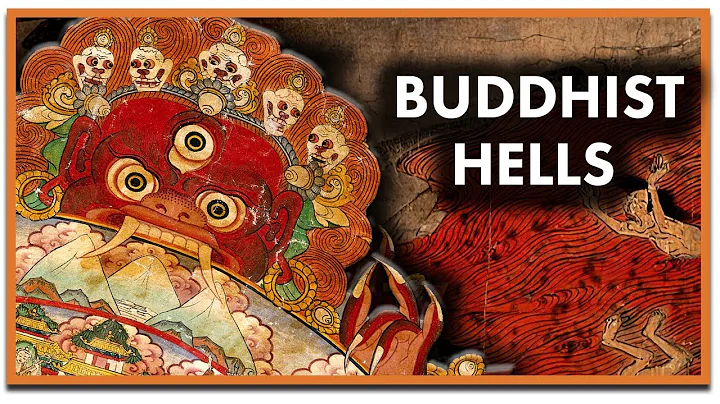Sun Dianying I never dreamed that a "quilt" covered with rare treasures was actually the most valuable burial object in Cixi's tomb. That year, Sun Dianying threw away this "quilt" casually, allowing this precious rare treasure to be re-launched a hundred years later.
In 2013, staff from the Dongling Reserve in Hebei showed the media the first quilt embroidered with Dharani sutra. The scriptures on this quilt are woven from gold silk. In addition to the scriptures, the quilt is also decorated with patterns such as Buddha statues, pagodas, etc. This luxurious quilt does not lose the majesty of the royal family, but also has a sense of religious sacredness.

Cixi came to Forbidden City at the age of eighteen. She was deeply loved by Xianfeng and was named Lan Guiren. After Xianfeng's death, Cixi, who gave birth to a dragon son for Xianfeng, was respected as the empress dowager. From this day on, the 27-year-old woman began her forty-eight years of political career, leaving a strong mark in the late Qing political arena.
Dharani Sutra is the full name of " Thousand Hands and Thousand Eyes Avalokitesvara Bodhisattva Great Perfect and Unobstructed Great Compassion Dharani Sutra ". This sutra is named after "people, Dharma, and metaphors". " Thousand Hands and Thousand Eyes Avalokitesvara Bodhisattva" is "people", "great perfection and unobstructed" and "great compassion" are "metaphs", and "darani" is "dharma"; therefore, "people, Dharma, and metaphors" are all complete. This sutra uses the "great, perfect, unobstructed, great compassion" as an analogy. Dharani is , Sanskrit , which is called "total holding"; the total holding is Dharma.
Strictly speaking, the Dharani Sutra is not a sutra of Eastern Buddhism, but a sutra of Tantric Buddhism. This sutra is "exclusive" to the royal family of , Qing , and no one can use this Dharani Sutra without the approval of the emperor. Cixi's status in the Qing Dynasty palace was self-evident, so she was naturally qualified to use the Dharani Sutra. According to documents, the quilt embroidered with the Dharani Sutra is placed on the top of Cixi's body. Under this quilt is Cixi's body and a priceless treasure.
There is a saying that those who recite this Dharani "get ten great benefits, fifteen kinds of good life, and not the fifteen kinds of evil deaths." Therefore, in Buddhism, there is a saying that the Dharani Sutra has an incredible great power and blessing power. After ordinary people die, they only need to cover the scriptures on the body to eliminate the sins of the dead and eliminate the demonic obstacles of the dead in the world. In addition, this scripture can also make the deceased feel comfortable in body and mind, be guided by Amitabha Buddha, and go to the Western Paradise. Before Before of the Qing Dynasty, the use of the Dharani Sutra was unrestricted. Regardless of whether the user believed in Buddhism or not, even pagans who slandered the Three Jewels during their lifetime could eliminate their sins during their lifetime through this scripture. Legend has it that even the dead who came to the underworld wearing the Dharani Sutra must be polite to him.
From this statement, we can see that the Dharani Sutra can be regarded as the most precious of the burial objects in the Dongling Mountains.

According to experts, this gold-weaving Dharani sutra has gone through many twists and turns, and after three stages, it was finally re-released in the 100th anniversary of the funeral of the Queen of Cixi.
Phase 1: In 1908, while the embassy of Cixi, the eunuch covered the quilt on the body of the Lafayette. Before making this quilt, there were more than 800 pearls on it, and the price of these pearls alone exceeded 160,000 taels of silver.
Phase 2: Sun Dianying led the tomb robbers and robbed the Dongling Mausoleum in a crazy way. During this period, all the funeral objects of Cixi were abducted by soldiers, and all the pearls on the quilt of the Golden Dharani were removed. However, the gold-weaving Dharani sutra that had lost its pearl was thrown aside by the soldiers and ignored it. Later, with the help of the National Government, Puyi and the remaining officials of the Qing Dynasty rebuilt Cixi's body, and placed the abandoned Dharani Sutra on the throne of the incense book, sealing the precious quilt in the underground palace again.
Phase 3: In 1979, the Dongling was opened to the public. Archaeologists sent Cixi's funeral objects to the Palace Museum, and the staff repaired and framed the sutra.
Obviously, Sun Dianying and his soldiers were not well educated, so they bought a box and returned the beads. In their eyes, there was only gold, silver and jewelry, and they did not realize the value of this sutra.Because of this, the gorgeous clothes that Cixi wore and the sutras covered by her body were randomly thrown into the underground palace without any interest, allowing these truly valuable treasures to be preserved.

In addition to the Dharani Sutra, there is also a very precious incense book among Cixi's funeral objects. Generally speaking, the incense treasure and incense book were a "must-have" burial object in the underground palace of the Qing Dynasty. Xiangbao Xiang Book is carved from sandalwood . Its value does not lie in its material, but in the text carved on it.
The Qing Dynasty’s ancestral system stipulated that the titles of emperors, empresses, and concubines would be engraved in the incense book of incense and treasures, and the deceased would be buried in the underground palace. According to the Qing Palace's title system, the queen can enjoy a sixteen-character title after her death. However, Cixi is different from an ordinary queen. The minister believes that only sixteen words cannot cover the life of the Old Buddha, so Cixi's incense treasure book is engraved with twenty-two-character titles.
and Dharani Sutra are exhibited together with the bamboo robe that Cixi wore during her lifetime, the empress dowager's imperial seal used, and the calligraphy and paintings created. In addition, there are some Buddhist supplies and artworks that can show the interests of Cixi's life. Whether in terms of cultural value or scale, this exhibition is the best exhibition of Cixi's cultural relics in history.

I have to say that Cixi’s life is quite romantic. We can see from the "Luofu Zhenying" she painted by herself and the word "Shou" she wrote, that Cixi had a certain foundation in calligraphy and painting. From these cultural relics, we can see the interesting side of Cixi in life.
Reference materials:
["The Thousand-Handed Thousand Eyes Avalokitesvara Bodhisattva's Great Perfect and Unobstructed Great Compassion Dharani Sutra"]







![[English] Who Am I - Lecture 1 - Ven. Guan Cheng - DayDayNews](https://i.ytimg.com/vi/KU0fUs2It5o/hq720.jpg?sqp=-oaymwEcCNAFEJQDSFXyq4qpAw4IARUAAIhCGAFwAcABBg==&rs=AOn4CLDFpQUN_QwRfC7bmP4sUadq-RcYdg)
![A Moving Masterpiece 清明上河图 [English narration] - DayDayNews](https://i.ytimg.com/vi/kxff-4GktOI/hqdefault.jpg?sqp=-oaymwEcCOADEI4CSFXyq4qpAw4IARUAAIhCGAFwAcABBg==&rs=AOn4CLBtHGLeUpJNCYDJYnZTuISQ1N5Vag)


